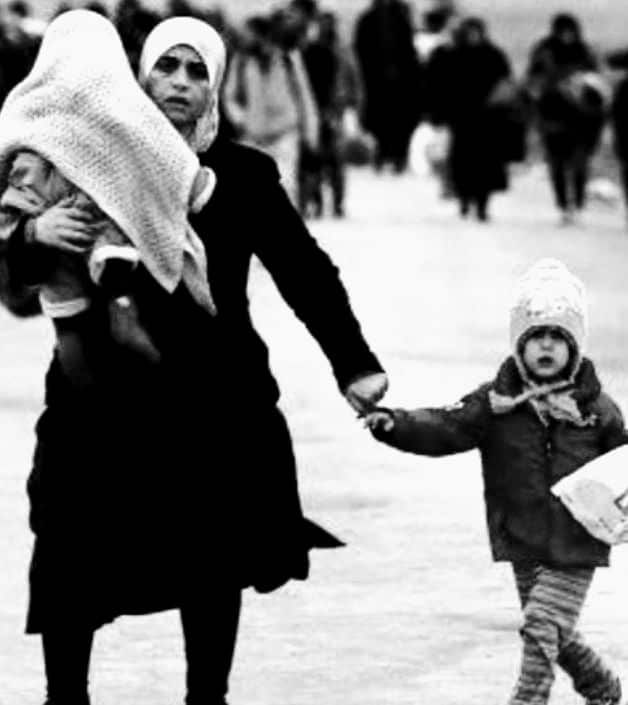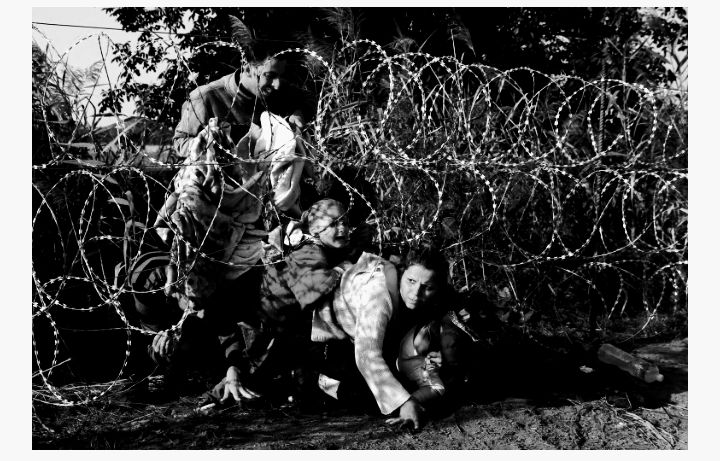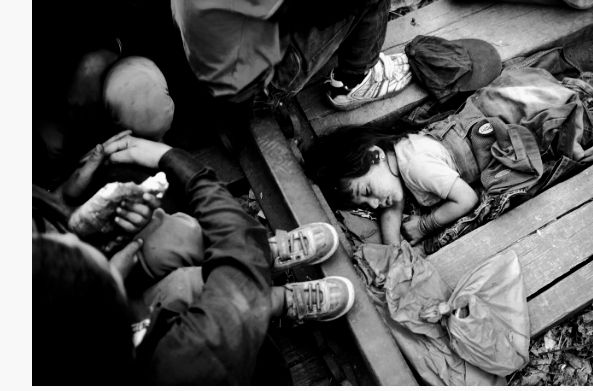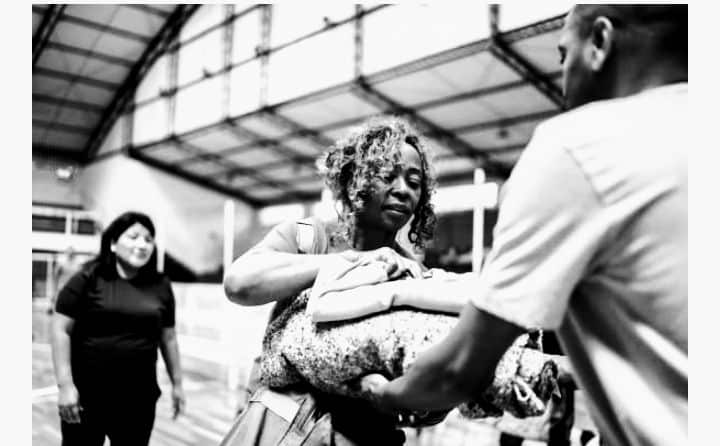In recent decades, global migration has become a defining issue, shaped by wars, economic challenges, climate change, and human rights abuses. The movement of people across borders is at historic levels, with millions seeking asylum and better living conditions in new countries. The United Nations High Commissioner for Refugees (UNHCR) estimates that over 100 million people worldwide have been forcibly displaced, including around 35 million refugees.
This crisis poses significant challenges to host countries and international organizations while impacting both the migrants themselves and the communities they leave behind. Understanding the complex causes and consequences of global migration is essential for formulating effective responses that uphold human rights and promote stability.

Root Causes of the Migration Crisis
1. Conflict and Persecution.
Armed conflicts and persecution remain the primary drivers of forced migration. From Syria and Afghanistan to the Democratic Republic of Congo and Myanmar, individuals flee violence, oppression, and political instability that endanger their lives. Ethnic and religious persecution often compounds these issues, as seen in the case of the Rohingya minority in Myanmar or the Yazidis in Iraq. Conflict zones frequently lack legal and social protections, prompting large-scale displacement as people seek safety and stability in neighboring or far-off nations.
2. Economic Hardship and Inequality
Economic factors also play a central role in driving migration. In countries facing high unemployment rates, inflation, and lack of economic opportunity, individuals may migrate in search of better livelihoods. Economic migration is common from regions in Africa, Latin America, and South Asia, where poverty and limited social mobility force individuals to pursue work in more prosperous countries. Often, these migrants send remittances back home, creating a critical source of income for their families and supporting the local economies in their countries of origin.
3. Climate Change and Environmental Degradation
Climate change is increasingly becoming a significant cause of displacement. Rising temperatures, severe droughts, floods, and other extreme weather events are making certain areas uninhabitable. In places like the Sahel region in Africa and coastal areas of Bangladesh, climate-related displacement is accelerating as land degradation and resource scarcity push people to migrate. The concept of “climate refugees” is gaining recognition, though these individuals currently lack formal protections under international refugee law.

4. Political Instability and Governance Failures
Corruption, poor governance, and human rights abuses also drive migration. In countries where the government fails to provide basic services, protect its citizens, or enforce the rule of law, people may feel compelled to seek refuge elsewhere. Political instability in Venezuela, for example, has led to one of the largest migration crises in Latin American history, with millions fleeing a collapsing economy, food shortages, and widespread insecurity.
Impact on Host Countries and Communities
1. Economic Contributions and Challenges
Migrants and refugees often contribute to the economy of host countries by filling labor shortages, starting businesses, and paying taxes. In many Western countries, an aging population and declining birth rates have created a demand for migrant labor in sectors such as agriculture, healthcare, and construction. However, a sudden influx of refugees can strain public services, including healthcare, education, and housing, especially in countries with limited resources. Balancing the economic contributions of migrants with the needs of host communities is a critical challenge for policymakers.
2. Social and Cultural Integration
Social integration is essential for building cohesive communities and ensuring that migrants can participate fully in society. Cultural differences, language barriers, and prejudice can hinder integration efforts, leading to social tensions. Host communities may feel threatened by the arrival of large numbers of migrants, fearing a loss of cultural identity or increased competition for jobs. Effective integration programs, including language classes, cultural orientation, and community engagement initiatives, can help bridge these gaps and promote mutual understanding.
3. Political Polarization
The migration crisis has fueled political polarization in many countries, particularly in Europe and North America. In some cases, anti-immigrant sentiments have been exploited by populist leaders, resulting in restrictive immigration policies and a rise in xenophobia. The debate over immigration often becomes a divisive issue, complicating efforts to implement humane policies and address the root causes of migration. Balancing security concerns with humanitarian obligations remains a challenge for many nations.
International Response and Legal Frameworks
1. The Role of International Organizations
International organizations, particularly the United Nations, play a crucial role in addressing migration and refugee issues. The UNHCR provides protection and assistance to refugees, working with governments and NGOs to ensure that basic needs such as food, shelter, and healthcare are met. The International Organization for Migration (IOM) also supports migrants, focusing on safe migration practices and providing emergency assistance. However, limited funding and resources constrain these organizations’ ability to respond effectively to large-scale crises.
2. Legal Protections and the Refugee Convention
The 1951 Refugee Convention and its 1967 Protocol form the foundation of international refugee law, defining who qualifies as a refugee and the rights they are entitled to. These legal frameworks require that refugees not be returned to countries where they face persecution (the principle of non-refoulement). While this convention has provided vital protections, it does not cover individuals displaced by climate change or economic hardship. Expanding the legal definitions to account for modern causes of displacement is an ongoing debate among policymakers and human rights advocates.

3. Regional Cooperation and Burden-Sharing
Addressing the global migration crisis requires cooperation among nations. Regional agreements, such as the European Union’s asylum policies or the Comprehensive Refugee Response Framework, aim to share the responsibility of hosting refugees more equitably. However, these frameworks often face challenges in implementation, with some countries reluctant to accept their share of refugees. Burden-sharing remains a critical issue, as frontline states like Turkey, Jordan, and Lebanon host millions of refugees but often receive insufficient support from wealthier nations.

Potential Solutions to the Migration and Refugee Crisis
1. Addressing Root Causes in Countries of Origin
One of the most effective ways to address the migration crisis is by tackling the root causes of displacement in migrants’ home countries. This requires a multi-faceted approach, including conflict resolution, economic development, and climate resilience initiatives. Investing in poverty reduction, education, and job creation can help individuals build stable lives in their home countries, reducing the pressure to migrate. Additionally, international efforts to mitigate climate change and improve resource management can make vulnerable regions more resilient.
2. Strengthening Legal Pathways for Migration
Creating legal pathways for migration can reduce the need for irregular and often dangerous migration routes. Labor migration programs, student visas, and family reunification policies can help people migrate safely and legally. Expanding these pathways requires collaboration between sending and receiving countries to ensure that migrants meet labor market needs and contribute positively to host economies. Legal migration also alleviates pressure on asylum systems, allowing countries to focus resources on those most in need.
3. Improving Refugee Resettlement Programs
Resettlement programs provide a safe and structured way for refugees to rebuild their lives. These programs should prioritize vulnerable groups, such as women, children, and those with medical needs. Countries can improve their resettlement capacity by increasing quotas, streamlining application processes, and providing adequate support for integration. Successful resettlement programs can serve as models, demonstrating that refugees can contribute positively to society when given the opportunity.
4. Promoting Community-Based Support for Integration
Effective integration is essential for fostering harmony between migrants and host communities. Community-based programs, including language courses, employment assistance, and social events, can facilitate integration and reduce tensions. Involving local leaders, businesses, and civil society organizations in integration efforts can help bridge cultural gaps and create a sense of belonging. Education campaigns that counteract misinformation about migrants and refugees are also critical to fostering social acceptance.
Conclusion.
The global migration and refugee crisis is one of the most pressing humanitarian issues of our time. Driven by complex factors, including conflict, economic hardship, and environmental degradation, migration is likely to continue shaping societies worldwide. Addressing this crisis requires a comprehensive approach that balances humanitarian obligations with national interests. By focusing on root causes, expanding legal migration pathways, and investing in integration efforts, the international community can build more resilient and inclusive societies. Global migration may be inevitable, but with coordinated action and compassionate policies, we can turn this challenge into an opportunity for growth and mutual understanding.




